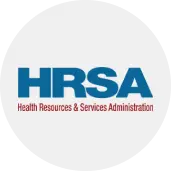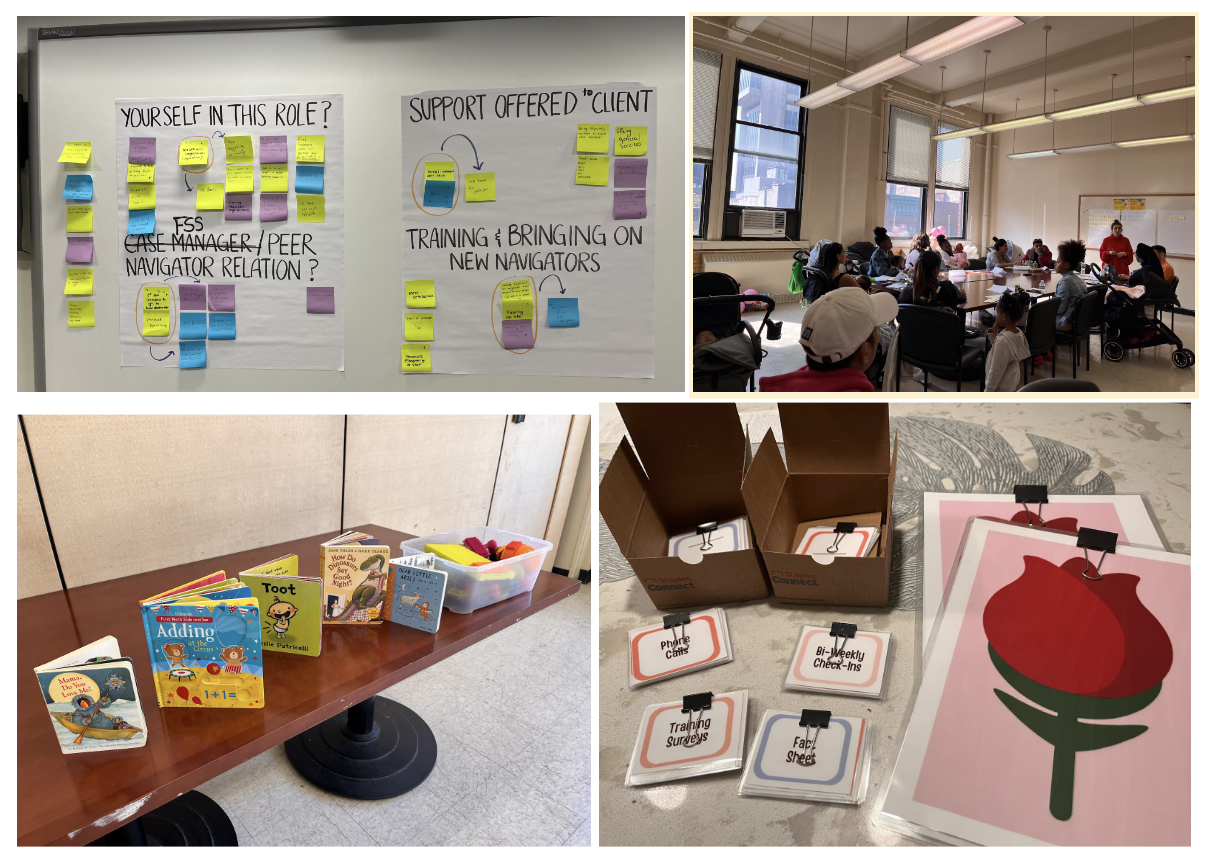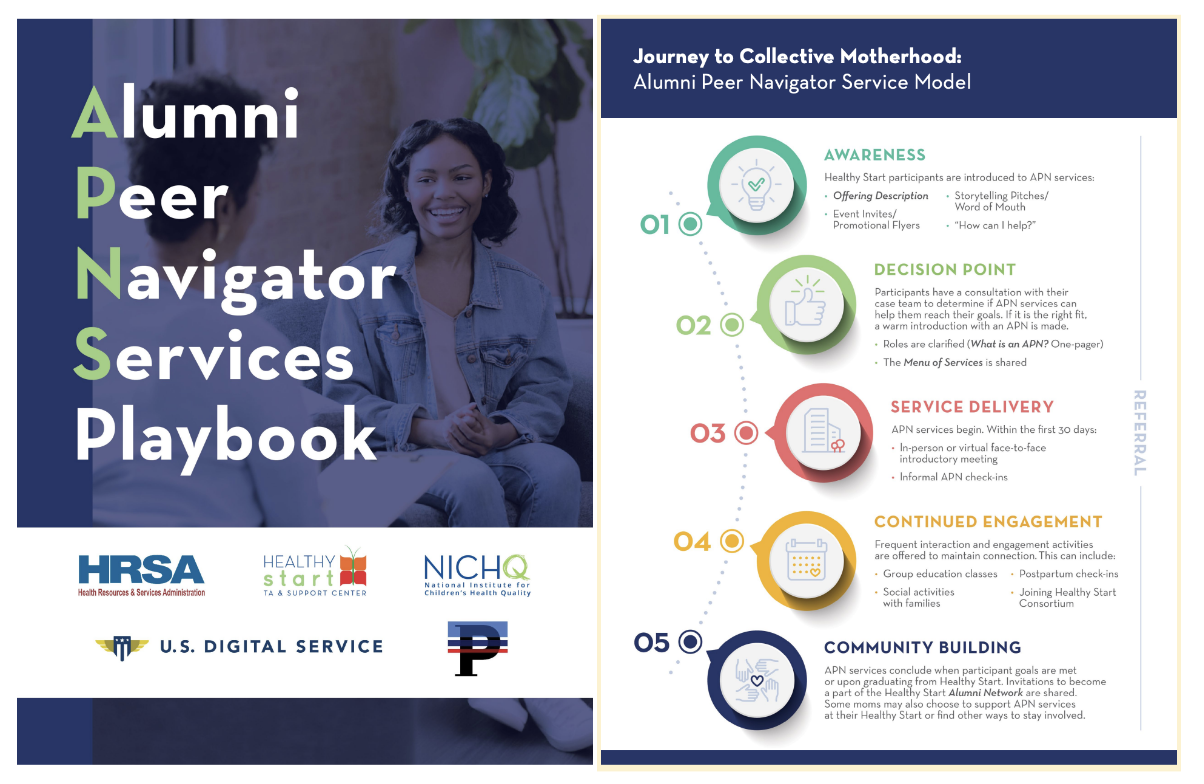Piloting a Peer Navigator Service to Improve Access to Public Benefits
Health Resources and Services Administration

- Health
- Public experience
Skill Set:
Originally published on November 6, 2024
About HRSA
The Health Resources and Services Administration (HRSA) is a federal agency which provides equitable health care to people who are geographically isolated and economically or medically vulnerable. HRSA’s mission is to improve health outcomes and achieve health equity through access to quality services, a skilled health workforce, and innovative, high-value programs. HRSA’s Healthy Start program provides federal funding to grantees to improve outcomes before, during, and after pregnancy.
Having a child is one of the most significant life experiences for any family, yet the burdens weigh heaviest on families with limited access to resources and opportunities. Executive Order 14058, Transforming Federal Customer Experience and Service Delivery To Rebuild Trust in Government, tasked HRSA with using human-centered design to improve this experience. HRSA hosted a USDC Fellow for the design and implementation of a pilot program to improve government support to new parents.
The challenge
The U.S. has seen increasing infant and maternal mortality rates in recent years, especially in Black, Brown, and Indigenous communities (CDC, 2023). Each year, billions of dollars allocated for existing public benefits never reach eligible households because the federal safety net is so difficult to navigate. Lack of awareness, missing or inaccurate information, and complex application processes prevent eligible applicants from receiving or even seeking benefits.
![A person holds a baby while a speech bubble next to them reads, When you call to try to talk to somebody, you never can get through. [...] I have to leave her six messages before she'll ever call me back.](/assets/images/projects/birth-to-five-signatories-deep-dive.webp)
The approach
A cross-agency team of staff at HRSA and the U.S. Digital Service (USDS) worked collaboratively with communities to envision and implement a solution to this challenge. HRSA did not have any staff designers, and through the USDC fellowship, they were able to secure their first ever designer at the agency, who also served as the design lead for the project. The team conducted ten learning visits in different states to understand the specific difficulties families were experiencing in accessing benefits and what they thought could be an ideal path forward. The visits resulted in the concept of peer navigator services: a model where experienced families in the community connect with and support newer families by helping with tasks like enrolling in federal benefits, accessing resources, and achieving self-sufficiency while providing social and emotional support along the way. The team hypothesized that alumni of the Healthy Start program would be the strongest peer navigators by leveraging their lived experiences as program participants.
In July 2023, an Alumni Peer Navigator (APN) Services pilot launched at six Healthy Start sites: Los Angeles, CA; Pee Dee, SC; Harlem, NY; Baton Rouge, LA; Turtle Mountain, ND; and Atlanta, GA—communities with some of the highest maternal and infant mortality rates in the United States.
Common services included:
- Family check-ins
- Delivering essential baby items, documentation
- Assisting with benefits enrollment and language access
- Serving as buddies to social service appointments
- Connecting moms with other moms and care, including doula services
- Hosting career workshops and job readiness events
- Advocating for quality treatment for women of color
Each site had flexibility in their specific implementation of the APN Services model, with general guidance provided by a federal design team from HRSA and USDS. Implementation activities ranged from finding creative ways to engage their communities such as a virtual self-care series to contributing to food pantries or organizing social media groups.The team conducted in-person design visits in Fall 2023 and Spring 2024, which included design sessions with families, alumni peer navigators, and Healthy Start staff to improve the pilot service offerings.

The impact
APNs supported more than 500 families over the nine-month pilot period. The team collected metrics on client satisfaction, benefits, and proxies to maternal stress. Key findings included an average satisfaction rating of 4.5 out of 5 stars from APNs and 4.6 out of 5 stars from families. Additionally, 71% of families reported that their APN supported them in enrolling in benefits, and 81% noted that APNs made the process easier.
Leadership from all six pilot sites reported that the APN Services pilot was an improvement to their organization, and 100% recommended other Healthy Start grantees consider APN Services. Most case managers reported that this model reduced their workload burden, saving an average of 7.3 hours per month. Moreover, 74% of families felt less lonely after being paired with their APN, and 98% expressed a desire to continue working with their APN.
Families were incredibly appreciative of the pilot. A mother in Atlanta commented on the support she received from the APN program, saying “[Support] looks like a big belly and being full. Before having WIC, [I was] going to work hungry, leaving work hungry. Just having those amenities in my household, I’m so grateful. I feel supported so I can keep going. It’s fundamental, it gives you hope for a better future. I have exceptional customer service. I have a happy child.” APNs also felt a sense of fulfillment. An APN in Los Angeles said, “I am able to provide resources. I am able to make somebody’s day, feed somebody, get diapers…I am just able to help somebody.”
Once the proof-of-concept was established, the next steps for HRSA include expanding the program to the more than 100 Healthy Start sites across the country. To support the program’s scaling and sustainability, the team published a playbook of best practices so that other Healthy Start programs can adopt APN Services with lessons learned from the pilot. For current updates on this work, see the project website on Performance.gov.

digitalcorps.gsa.gov
An official website of GSA’s Technology Transformation Services


